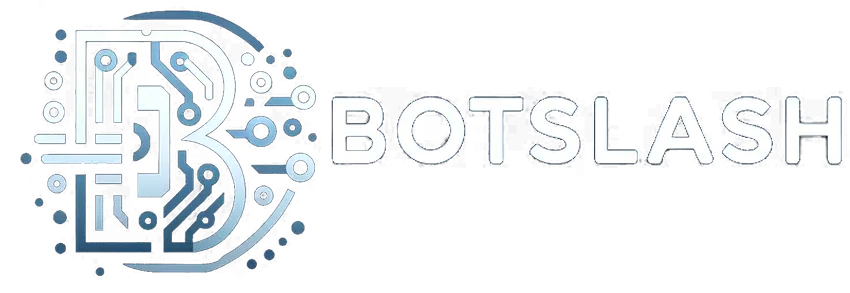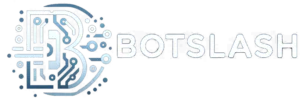کیسا ہو اگر ہم ایسے کسی شہرمیں رہتے ہوں جہاں ساری چیزیں چاہے وہ اشیاء کی خریداری ہو یا پھر لیز وغیرہ پرمعاملات ہوں یا کوئی اورمعاملہ ان سب کیلئے آپ کو بینک وکیل یا کسی بھی درمیانی واسطے خواہ وہ کوئی ادار ہ ہو یا کوئی فرد کسی بھی کی بھی ضرورت نہ پڑے بلکہ سب کچھ ایک سنٹرل اتھارٹی کے ذریعے کنٹرول کیا جاتا ہو اور جن دو اشخاص نے کوئی معاملہ طے کرنا ہو تو وہ براہ راست ایک دوسرے کے ساتھ جڑ سکتے ہوں تو پھر سواگت ہے آپ کا “ایتھیریم” کی دنیا میں جو ایک ڈیجیٹل شہر کی مانند ہے جہاں ساری ٹرانزیکشنز ڈی سنٹرلائزڈ ہوتی ہیں اور ہر ایک مساوی پاوررکھتا ہے۔ ایتھیریم کیا ہے؟
ایتھیریم بٹ کوائن کی طرح ہی ایک کرپٹو کرنسی ہے البتہ اس میں بہت سارے اضافی فیچرز ہیں ۔ اگر بٹ کوائن ایک ڈیجیٹل سونا ہے جو بہت قیمتی مگر محدود قسم کا اثاثہ ہے تو دوسری طرف ایتھیریم کو ڈیجیٹل کاموں کیلئے بہت وسیع پیمانے پراستعمال کیا جاسکتا ہے جس میں سادی سی ٹرانزیکشنز کرنے سے لے کر پیچیدہ ایپلیکیشنز تک کچھ بھی بنا سکتے ہیں۔
ایتھیریم بنیادی طور پر تو ایک ڈی سنٹرلائزڈ پلیٹ فارم ہے جو سمارٹ کنٹریکٹس پر چلتا ہے۔ سمارٹ کنٹریکٹس ایسے خودکار کنٹریکٹس ہوتے ہیں جن کی شرائط براہ راست کوڈ میں لکھی گئی ہوتی ہیں۔اس کو سمجھنے کیلئے آپ وینڈنگ مشین کو لے لیجئےجس میں ہم پیسہ ڈالتے ہیں اور اپنی مرضی کی چیز کا انتخاب کرتے ہیں اور مشین خودبخود ہمیں وہ چیز دے دیتی ہے۔اس سارے پراسس میں کسی کیشئر کی ضرورت نہیں پڑتی۔ سمارٹ کنٹریکٹس بھی اسی طرح کام کرتے ہیں۔ یہ اس بات کو یقینی بناتے ہیں کہ جیسے اس کے اندر کوڈ کی گئی شرائط پوری ہو جائیں توٹرانزیکشنزاورایگریمنٹس خودبخود مکمل ہو جائیں۔
.
ایتھیریم کی اہمیت
ایتھیریم کو جو چیز سب سے زیادہ اہم بناتی ہے وہ یہ ہے کہ یہ صرف ڈی سنٹرلائزڈ پیسہ ہی نہیں بلکہ پوری کی پوری ایپلیکیشنزکو بھی ڈی سنٹرلائزڈ بنا سکتا ہے۔ اس ڈی سنٹرلائزیشن مطلب یہ ہے کہ یہاں کوئی سنگل سنٹرل پوائنٹ نہیں ہوتا جس کو کنٹرول کیا جا سکے یا جس میں خرابی پیدا ہو۔ ذرا سوچیں اگر ہم فیس بک کو ہی ڈی سنٹرلائزڈبنا دیتے تو اس کوئی ایک کمپنی نہیں بلکہ اس کے یوزر چلا رہے ہوتے اور اس کو پھر بند کرنا یا اس کے ڈیٹا کا غلط استعمال کرنا لگ بھگ ناممکن ہوجاتا۔
ایتھیریم نے ٹیکنالوجی کے میدان میں متعدد نئی قسم کی راہیں کھولی ہیں:
“ڈی سنٹرلائزڈ فائنانس (DeFi)”:
یہ لوگوں کوروایتی بینکوں پر انحصار کیے بغیر قرض دینے، لینے اورٹریڈنگ کی سہولت مہیا کرتا ہے۔
“نان فنجبل ٹوکنز (NFTs)”:
یہ بہت منفرد قسم کی ڈیجیٹل اشیاء ہوتی ہیں جو کسی آرٹ، میوزک یہاں تک کہ کسی ورچوئل رئیل اسٹیٹ کی بھی نمائندگی کر تی ہیں۔
“ڈی سنٹرلائزڈ ایپلیکیشنز (DApps)”:
یہ ایسی ایپس ہیں جوایک سرور کے بجائے کمپیوٹرزکے نیٹ ورک پر چلتی ہیں، جس سے وہ زیادہ مضبوط اور شفاف ہوتی ہیں۔
پروف آف ورک (PoW) اور پروف آف اسٹیک (PoS)
ایتھیریم کے کام کے طریقہ کار کو سمجھنے کیلئے دو اصطلاحات کو سمجھنا لازمی ہے : پروف آف ورک (PoW) اور پروف آف اسٹیک (PoS)۔
پروف آف ورک (PoW)
PoW سسٹم میں،ٹرانزیکشنز کومائنرزکے ذریعے تصدیق کر کے پھر بلاک چین میں شامل کیا جاتا ہے۔ مائنرز طاقتور کمپیوٹرز کا استعمال کرکے پیچیدہ ریاضیاتی مسئلوں کو حل کرنے کی کوشش کرتے ہیں اور جو سب سے پہلے حل کر لیتا ہے اسے بلاک چین میں ٹرانزیکشنز شامل کرنے کا اختیار ملتا ہے اور ساتھ ہی کچھ ایتھیریم بطور ریوارڈ بھی ملتے ہیں۔ اس سارے عمل بہت زیادہ انرجی لگتی ہے اور پیچیدہ ریاضیاتی مسئلوں کو حل کرنے کیلئے بہت زیادہ کمپیوٹیشنل پاور درکار ہوتی ہے۔حد سے زیادہ پاور اورانرجی استعمال کرنےکی وجہ سے ماحولیاتی مسائل کے خدشات بھی پیدا ہوتے ہیں ۔
پروف آف اسٹیک (PoS)
PoS سسٹم میں ویلیڈیٹرز کو نئی ٹرانزیکشنز کو بلاک چین میں شامل کرنے کے لیے اس بنیاد پر منتخب کیا جاتا ہے کہ ان کے پاس کتنے کوائنز ہولڈ میں ہیں اوروہ کتنے کوائنز کو سٹیک یعنی ایک قسم کے گروی رکھ سکتے ہیں ۔ ایتھیریم اب PoW سے PoS کی طرف منتقل ہو رہا ہے تاکہ توانائی کی کھپت کے مسئلے کو حل کیا جا سکے۔ یہ طریقہ انرجی کی حد سے زیادہ کھپت کو کم کردے گا اورامید ہے کہ اس کی وجہ سے ایتھریم نیٹ ورک زیادہ تیز اوراسکیل ایبل (قابل توسیع )بن جائے گا۔
ایتھیریم فورک اور ایتھیریم کلاسک (ETC)
ایتھیریم کوائن کا تاریخی سفر اتنا ہموار نہیں رہا ہے بلکہ اس دوران کئی مشکلات اور واقعات پیش آتے رہے ہیں۔ 2016 میں، ایک بہت بڑا اوراہم واقعہ پیش آیا جسے “The DAO Hack” کہا جاتا ہے ۔ ہوا یوں کہ ایک سمارٹ کنٹریکٹ جس کا نام “The DAO” تھا اور یہ ایک وینچر کیپیٹل فنڈ ( ابتدائی سرمایہ کاری )کے طور پر کام کرنے کے لیے بنایا گیا تھا ۔ اس کو مینوپولیٹ کرکے اس کا غلط استعمال کیا گیا اور اس کی وجہ سے بڑی مقدار میں ایتھر کوائن (جو ایتھیریم کی کرنسی ہے) چوری ہو گیا۔
اس مسئلے کو حل کرنے کے لیے ایتھیریم کمیونٹی نے “ہارڈ فورک” کرنے کا فیصلہ کیا۔ ہارڈ فورک ایک سافٹ ویئراپ ڈیٹ کی طرح ہوتاہے جو کسی بلاک چین کے دو الگ الگ ورژن بناتا ہے۔ لہذا یہاں ہارڈ فوک کے ذریعے ایک نیا ورژن بنایا گیا جس میں ہیکنگ کو ریورس کرکے سارے چوری شدہ ایتھر کوائنز کو واپس لایا گیا اور یہ بلاک چین ایتھیریم (ETH) کے طور پر جاری رہی ۔ جبکہ سابقہ بلاک چین جو شروع سے چلتی آرہی تھی وہ بغیر کسی ترمیم کے ایتھیریم کلاسک (ETC) کے طور پر ویسے ہی چلتی رہی ۔
نتیجہ
ٹرانزیکشنز اور ٹرسٹ کے حوالے سے ایتھیریم نےہماری سوچ کر یکسر انقلابی تبدیلی دی ہے۔ اس نے کنٹرول کو ڈی سنٹرلائزڈ کرکے اور ساتھ سمارٹ کنٹریکٹس کو فعال کر کے فنانس، آرٹ، گیمز اور دوسرے سارے میدانوں میں جدت کے لیے بے پناہ امکانات کی راہیں کھولی ہیں ۔ پروف آف ورک سے پروف آف اسٹیک کی منتقلی نیٹ ورک کے مستقبل میں زیادہ پائیداری اور قابل توسیع ہونے کی طرف ایک اہم قدم ہے۔ ایتھیریم کے نیٹ ورک پر ہونے والے ہارڈ فورکس اس کےشاندار ڈیجیٹل ایکوسسٹم کی درپیش چیلنجز کو قبول کرنے میں لچک اور اڈاپشن کو اجاگر کرتے ہیں۔
دیکھا جائے تو ایتھریم کے اس ڈیجیٹل شہر میں آپ کی تخلیقی صلاحیتوں کیلئے کوئی محدودیت یا باؤنڈری نہیں ہے ۔ آپ ایک آرٹسٹ کے طور اپنا کام NFTs کی شکل میں بیچنا چاہتے ہوں یا پھر آپ ایک ڈیویلپر ہوں جو کوئی DApp بنانا چاہتےہوں یا پھر نت نئی ٹیکنالوجیز کے کھوجی ہوں ، ایتھیریم ہی وہ جگہ ہے جہاں آپ اپنی تخلیقی صلاحتیوں کو نکھار کر ایک نیا رنگ دے سکتے ہیں ۔



